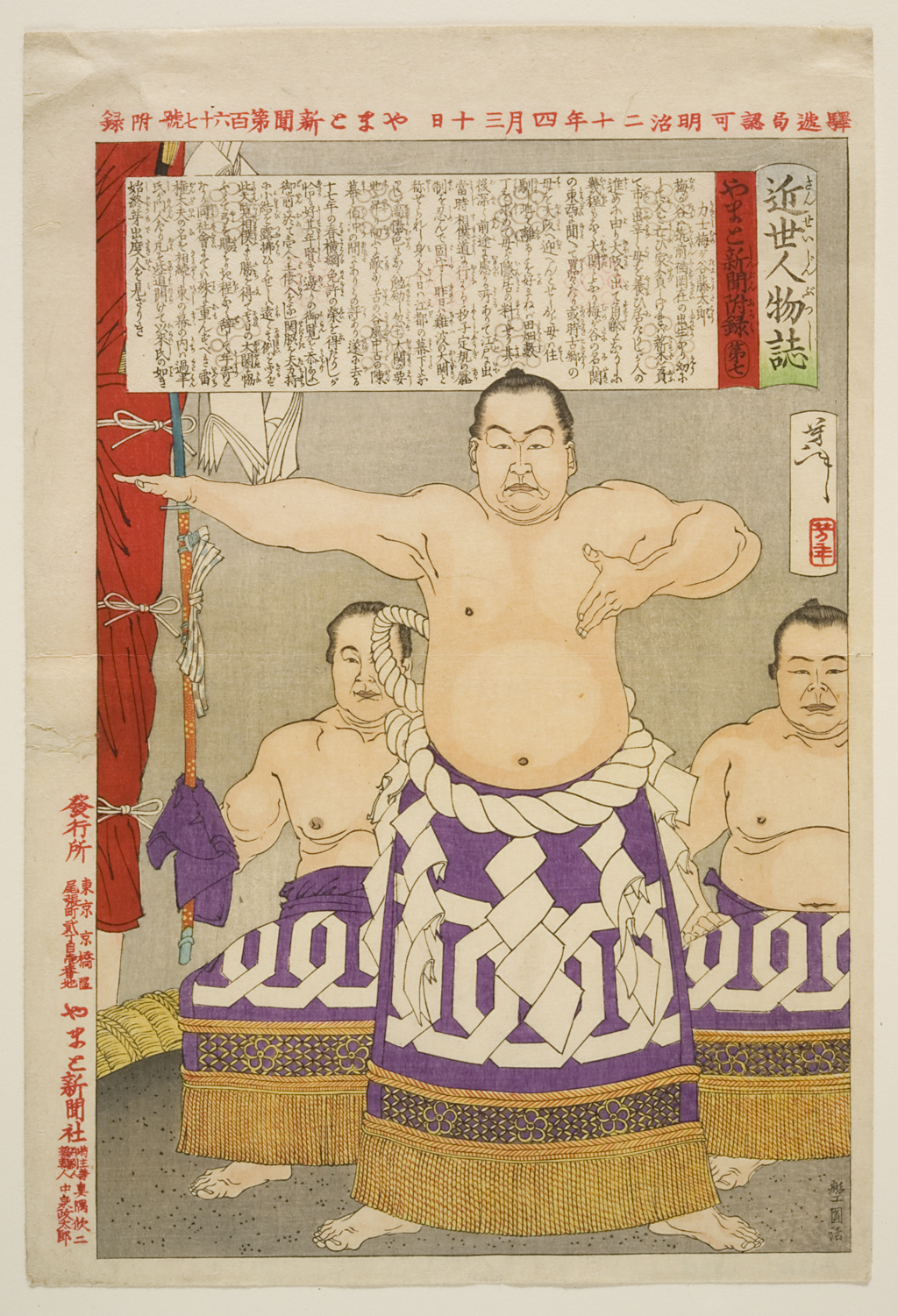Sacred Space and Japanese Art at the Spencer Museum of Art
Entry by Masaaki Morishita
This color woodcut print shows the highest-ranking sumo wrestler (yokozuna) at the time, Umegatani Tōtarō (center), posing in his ceremonial belt (mawashi). It was created by popular ukiyo-e artist Tsukioka Yoshitoshi and published as a supplement to the daily newspaper Yamato Shinbun. As mentioned in the text in the upper cartouche of the picture, Umegatani was the head of a group of sumo wrestlers who fought before the Meiji Emperor in 1888.
The history of sumo goes back to the age of Japanese mythology and this form of wrestling continues to be performed as an important part of Shinto ritual, most notably as an indicator of the annual rice crop. The twisted straw rope and white paper ribbons around Umegatani’s mawashi are the same as those used at Shinto shrines, which denote sacred or purified space. The woven straw border of the ring (part of which can be seen on the left-hand side of the print) is a replacement of real straw rice bags that used to be placed around the ring. Regarded as a sacred space, the ring (dohyō) is purified with salt, which wrestlers toss into the ring each time before they fight. Controversially, women are prohibited from touching and entering the dohyō even today.

